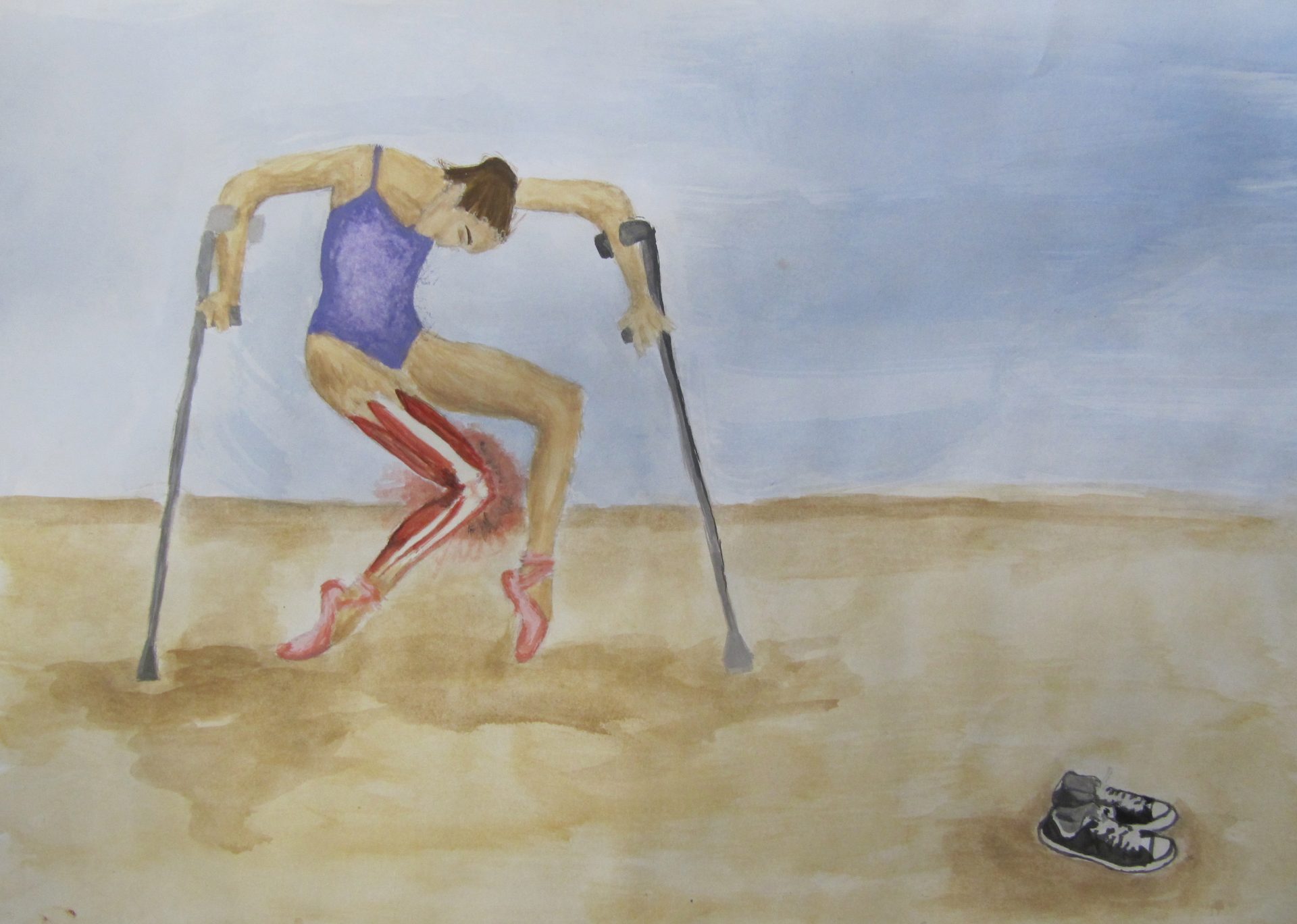Resilience in Dancers
According to a study, 65-80% of ballet injuries are in the lower extremity (p.121) and knee injuries account for 14-20% of all ballet injuries (p.122) (2). My sister is among this cohort where she suffered from Osteochondritis Dissecans in her left knee at the age of 15. This rare condition, suspected to be caused from repetitive trauma and stress on the knee, resulted in a small piece of bone losing its blood supply and cracking off the main piece of bone. Consequently she had to have stem cell surgery to repair her knee and was forced to neglect dancing for 12months in order to fully recover and return to dance.
As my sister was studying at a professional dance school in London in order to become a ballet dancer, this injury had a huge impact on her life to the extent that she empathised with the words of Steven McRae: We dedicate our lives to our profession, so to have it taken away from you is not only physically debilitating but mentally too By the end of the 12months, she had lost her confidence in ballet and decided that she didn’t want to dance again. She lost connectedness due to lack of support from class peers and coaches and as a result also lost the passion which was what gave her a meaning and purpose in dance. This was a heart-breaking story to watch – and as a sister, inspired me to produce an artwork so that I could express my perception of my sister’s choice through another means.
Through painting this piece, I’ve gained a whole new insight into how and why my sister ended up with an injury and lost her confidence in dance.
Firstly, the crutches in the painting represent the support she received from family and friends but that it wasn’t enough to keep her head up during her injury and recovery period. This is because of the lack of encouragement from her dance school. As a result she moved schools and joined a normal secondary school for her GCSEs, this is shown in the picture as her moving towards the trainers for a normal life. A further part of this painting aimed to stand out is the physical injury itself. The excruciating pain that radiates out of her knee portrays the burden it plays on the whole body. The painting also shows the common mistake made by dancers to continue dancing despite their body being in pain. Perhaps if my sister had had greater self-awareness, she would have listened to her body and prevented her injury from reaching the point of needing an operation. Finally the hunched over position of the dancer, portrays her physical weakness in energy and strength from the injury.
The American Dance Therapy Association focused on promoting resilience through dance and discovered that children and teens who have experienced trauma can find strength, resilience and the will to go on through facilitated dance/movement expression. Through creating this image I realised that a dancer needs resilience to dance, but perhaps more importantly, a dancer needs to dance to find resilience. Too frequently dancers focus on being able to block out pain so that the show carries on, but what would be more beneficial is if dancers focused on their enjoyment of dance and that in itself will promote resilience as it will push them to constantly move forward and improve.
References
1.Kerr G, Krasnow D, Mainwaring L. The Nature of Dance Injuries. Medical Problems in Performing Art. 1992; 7: 25-9.
2.Milan KR. Injury in Ballet: A review of Relevant Topics for the Physical Therapist. Journal of Orthopaedic & Sports Physical Therapy. 1994 Feb; 19(2): 121-9
3.Dance injuries from the ballet dancer’s point of view: top stars share their experiences; 2016 Feb 1. Available from: http://www.gramilano.com/2016/02/dance-injuries-from-the-ballet-dancers-point-of-view-too-stars-share-their-experiences
4.American Dance Therapy Association. Promoting Resilience Through Dance. Available from: http://www.atda.org/resources/documents/samhsa%202011%20adta%20sheets%20(2).pdf
Consent was received from my sister, Jessica Bailey

0 Comments